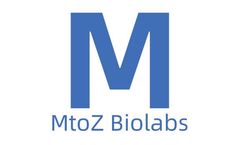Vaccine For The Pregnant Produces Articles & Analysis
41 articles found
Virus-like particles (VLPs) have garnered significant attention in recent years for their potential applications in vaccine development, drug delivery, and as tools in various biotechnological fields. These nanoparticles mimic the structure of viruses but lack the viral genetic material that makes viruses infectious. This unique characteristic offers a versatile platform for various innovative ...
The optimal storage environment temperature for most vaccines is 2-8℃. It is necessary not only to control the temperature stability but also to monitor the temperature. The 2-8℃ Vaccine Bluetooth Temperature Sensor can help managers view the storage environment temperature data directly on the APP without opening the incubator, thereby improving the efficiency of cold chain temperature ...
The field of immunology has experienced significant advancements over recent years, particularly in the area of recombinant vaccine production. This innovative approach has revolutionized the way vaccines are developed, manufactured, and administered, offering a promising alternative to traditional methods. By utilizing recombinant DNA technology, scientists can produce vaccines that are more ...
Recombinant protein vaccines are vaccines produced using genetic engineering technology. The principle is to clone one or several antigen genes of a pathogen into host cells, causing them to express the corresponding antigen protein. These proteins are then extracted for use in the vaccine. These vaccines can effectively stimulate the immune system to respond to specific pathogens, thereby ...
The advent of mRNA vaccines has revolutionized the field of immunization, offering a rapid and adaptable response to emerging infectious diseases. Central to the production of these vaccines are enzymes, which play crucial roles in the synthesis and modification of mRNA molecules. This article delves into the pivotal functions of enzymes in mRNA vaccine manufacturing, highlighting their ...
Recombinant protein vaccine is a type of vaccine that does not contain complete pathogens and is prepared from specific protein antigens produced by heterologous expression systems. Due to their advantages of good safety, strong stability, and relatively low cost, recombinant protein vaccines have been widely favored by researchers in recent years. Currently, recombinant protein vaccines have ...
Custom mRNA production has emerged as a cutting-edge technology in the field of molecular biology, offering researchers the ability to tailor-make specific messenger RNA molecules for various applications such as vaccine development, gene therapy, and regenerative medicine. This innovative process holds great promise in unlocking new possibilities in scientific research, paving the way for ...
Introduction RNA Lipid Nanoparticles (LNP) technology has rapidly gained prominence in the health and scientific domain, primarily due to its significant role in carrying the mRNA of the COVID-19 vaccines developed by Pfizer/BioNTech and Moderna. Yet, the potential of this technology spans beyond the confines of these vaccines or even the health industry. As research into premade RNA-LNP products ...
What are Adjuvants? Adjuvants, also known as immunomodulators or immune enhancers, are an additive to vaccines. Adjuvants are non-specific immune enhancers that enhance or alter the type of immune response to an antigen. Adjuvants can help antigens induce long-term effective specific immune responses in vivo, leading to higher vaccine efficacy and prolonged protection from immune responses. ...
Glycerin, a versatile and widely used compound, finds its application in various industries, including pharmaceuticals. By understanding the multifaceted applications of glycerin in vaccine formulation, storage, and delivery, pharmaceutical manufacturers can optimize their vaccine production processes to ensure superior quality and effectiveness. Among the numerous components and additives ...
Vaccines are considered one of the most successful medical interventions in the past few centuries, aiming to harness the human immune system and generate lasting protection against specific diseases. Traditional vaccines rely on the use of inactivated pathogens to trigger an immune response. However, many of these formulations carry a high risk of causing allergies or autoimmune reactions. ...
In the ever-evolving landscape of global healthcare, mRNA vaccines have emerged as an excellent tool in the fight against infectious diseases. This article explores the intricate and indispensable role that raw enzymes play in the manufacturing of mRNA vaccines, delving deep into their significance and impact on vaccine production. As we venture into this fascinating world, we will gain a ...
Due to the particularity of vaccines, vaccines need to be kept in a constant and suitable temperature environment during transportation and storage, and different vaccines require different environmental temperatures. Therefore, vaccines often need to be processed in the cold chain, and Temperature Humidity Recorders with quality certification are required to monitor and record the temperature of ...
Host Cell Residual DNA (rcDNA) refers to fragments of DNA derived from host cells that may be present in biological products. These products must not contain foreign substances, particularly host DNA, to avoid immune rejection and potential threats to life safety. Regulatory agencies worldwide have imposed strict limits on the amount of rcDNA, and various pharmacopoeias have outlined several ...
Streptococcus pneumoniae is the leading cause of pneumonia, sepsis and meningitis. Collectively, these infections are a leading cause of morbidity and mortality in older adults and young children. To fight these deadly infections, a pneumococcal vaccine is given to stimulate the production of antibodies against CPS. However, bacteria can manipulate their CPS structure to evade these antibodies. ...
Newcastle disease is a highly infectious viral disease of the avian species. The causative agent is Newcastle disease virus (NDV), which belongs to the family of Paramyxoviridae. Many commercial vaccines, both live and inactivated, are available on the market and protect from NDV infection and disease. In addition, viral vectors based on Newcastle disease virus have been previously ...
ByNuvonis
At the end of the year 2019, a cluster of severe pneumonia of unknown cause was described in Wuhan (Eastern China) and a SARS-like acute respiratory distress syndrome (ARDS) was noted in these patients. Early in January 2020, sequencing revealed a novel coronavirus (now termed SARS-CoV-2) as the causal factor for the disease designated as COVID-19. The pandemic caused by the virus has unforeseen ...
ByNuvonis
Vero cellsare a continuous adherent cell line that is frequently used in cell culture and plays an important role in worldwide vaccine and vector production (manufacturing). Unlike other mammalian cells, they do not secrete interferon alpha or beta when infected by viruses – this is one of the reasons that efficient replication of many viruses can be achieved in Vero cells, ...
ByNuvonis
The World Health Organization in its report on Neglected Tropical Diseases has stated that there is overwhelming evidence to show that the burden caused by many of the 17 diseases that affect more than 1 billion people worldwide can be effectively controlled and, in many cases, eliminated or even eradicated. Leishmaniasis caused by Leishmania spp is one such example and poses a grave health risk ...
Abera’s vaccine delivery platform works as a plug-and-play system where known or novel antigens can be engineered onto our delivery platform to create effective, multivalent vaccines that are cost-effective and fast to produce. We actively work together with academia and industry to enable the use of our vaccine delivery platform in design and development of new vaccines. Many of these ...














